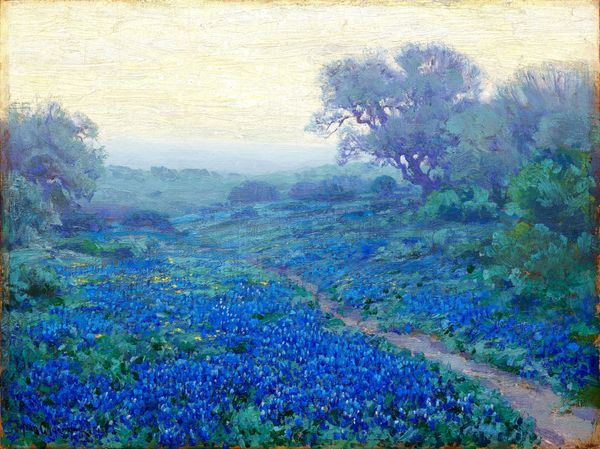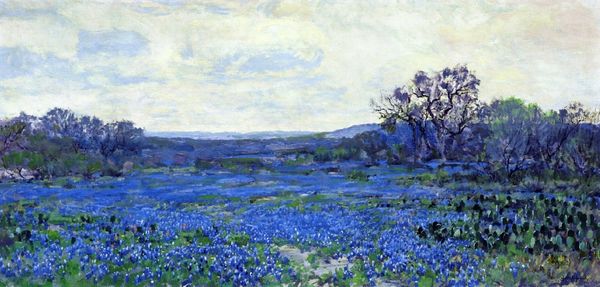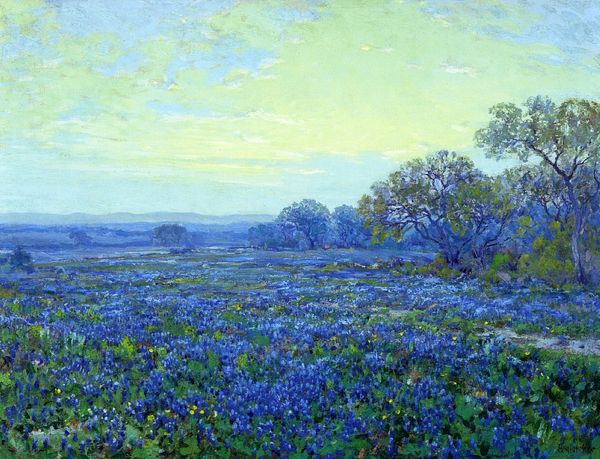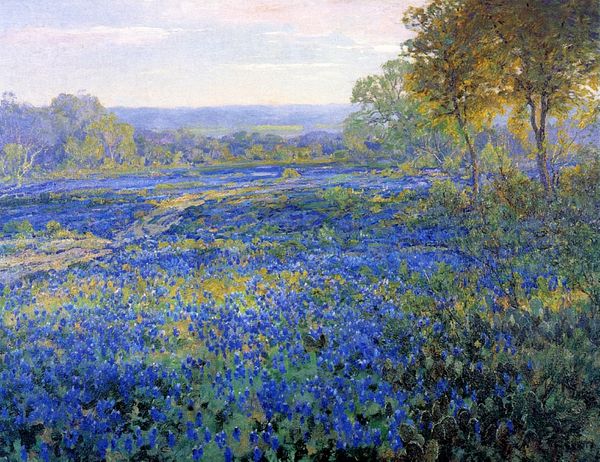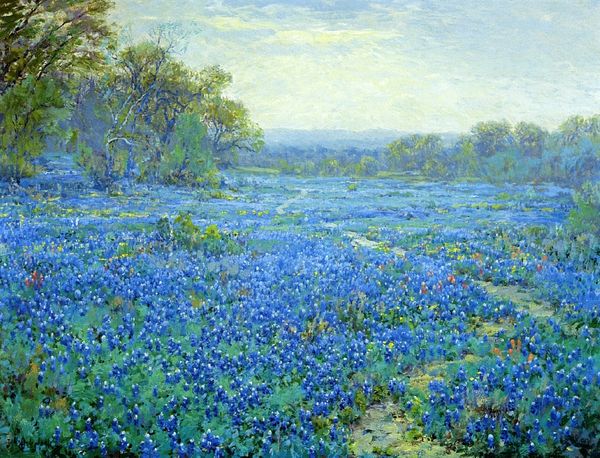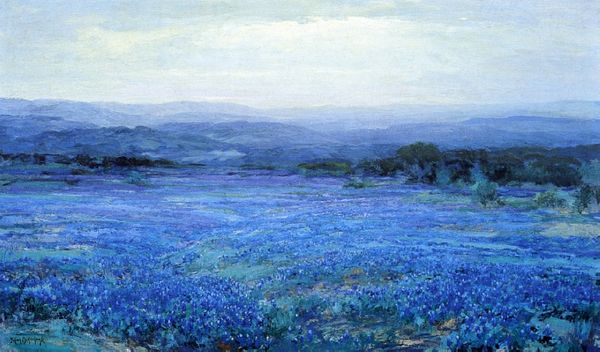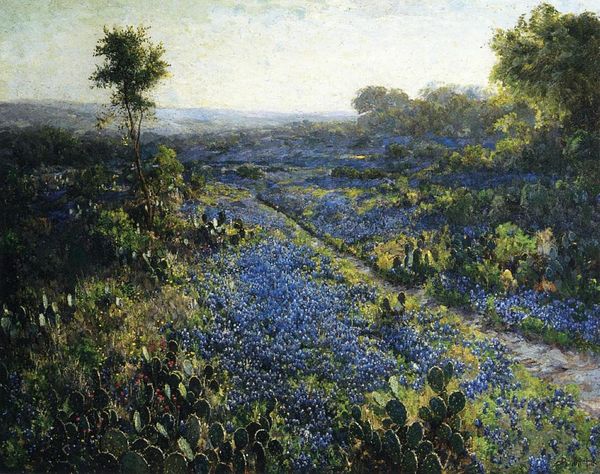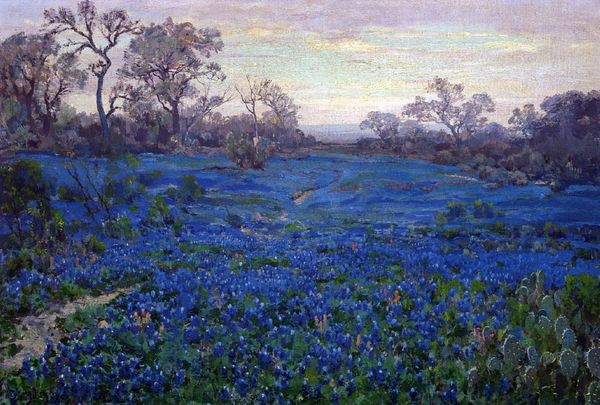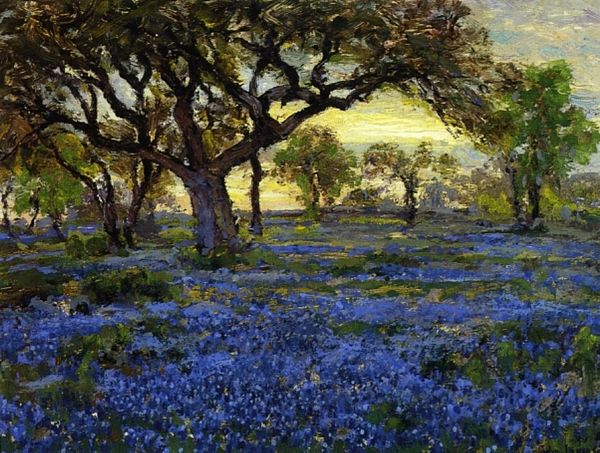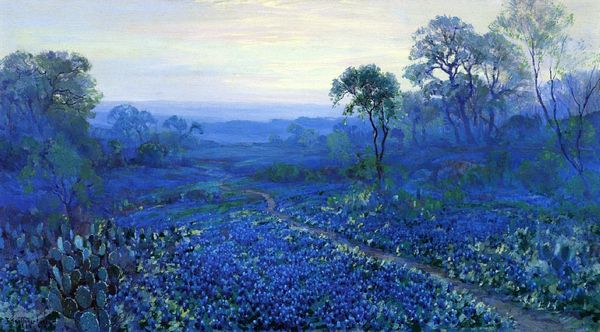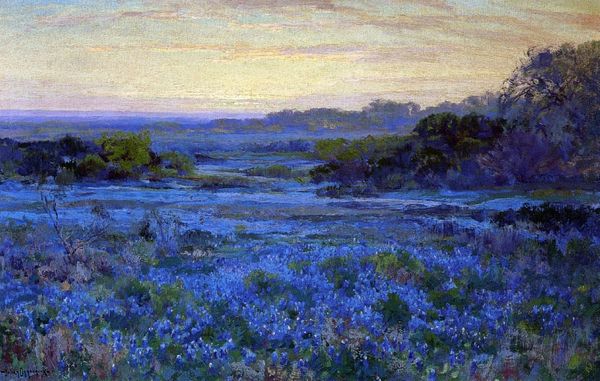
Copyright: Public domain
Editor: So this is Robert Onderdonk’s "Bluebonnet Scene" from 1921, done with oil paints en plein air. It’s just awash in this dominant blue, making it so immersive. I'm curious about the history. How do you interpret this work, especially considering its public appeal? Curator: Well, "Bluebonnet Scene" exists not in a vacuum, but within the evolving narrative of Texas identity. Onderdonk and other artists romanticized the Texas landscape, particularly bluebonnets, partly in response to increasing industrialization and urbanization. Editor: That makes sense, a need for nature! Were there patrons of this kind of work, shaping it in specific ways? Curator: Absolutely. The patrons—wealthy industrialists and art societies—largely dictated what was considered 'Texas art'. These landscapes became symbols of regional pride and distinctiveness, often downplaying the diverse realities of the population. Think about how that kind of patronage also limited artistic expression by steering artists toward particular marketable subjects. Editor: So the widespread popularity, does that have to do with the limited and marketable imagery? Curator: In a sense, yes. These images became deeply intertwined with the construction of Texan identity—an idealized vision. That affected which stories got told and how. The lack of visible human presence, especially that of marginalized communities, becomes conspicuous. What does that absence suggest to you? Editor: I guess I didn't consider the political nature of it at first. Curator: It's an easily digestible, beautiful scene that speaks to an emotional need. And once we begin to consider context, we begin to engage the politics and social forces at work, giving us a richer view. Editor: Right, thinking about the artist in society provides new insights, even with familiar landscapes!
Comments
No comments
Be the first to comment and join the conversation on the ultimate creative platform.
